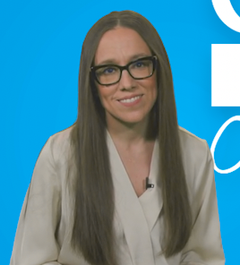
Future Directions in CLL Treatment
Lori A. Leslie, MD, and Hoshiyuki Iida, APN, offer closing thoughts on the future treatment landscape of chronic lymphocytic leukemia.
Episodes in this series

Transcript:
Lori A. Leslie, MD: We’ve talked a lot about how this landscape has evolved, with all the new treatment options we have. There’s a lot coming in the pipeline too. CLL [chronic lymphocytic leukemia] is still considered an incurable disease, meaning that even if patients get into remission—maybe they’re on time-limited treatment and aren’t on any therapy for a while, or they’re on watch-and-wait—they’re advised that they’ll need to follow up with us forever. That fear of the CLL rearing up again and needing treatment is always in the background for our patients.
The field is shifting toward, hopefully, finding a way to cure patients with CLL. We’re not there, but a lot of things in development might help us do that. Some things include therapies that are being developed across other B-cell cancers. In CLL we follow something called minimal residual disease, or MRD, and that can be checked in a variety of ways. At a deep level, it looks to see if every single cell is gone. That doesn’t usually happen on BTK [Bruton tyrosine kinase] inhibitors; that’s why they’re given long term. You usually have some small detectable disease, and it’s chronic. One of the ideas—and we’ve participated in clinical trials looking at this—is adding something to someone who’s in a deep remission to try to eradicate those few cells remaining and allow people to come off treatment and hopefully not need treatment again.
One thing that’s being explored in that setting is different immune treatments, so chimeric antigen receptor T-cell therapy is being developed in CLL. That’s where you retrain the immune system to recognize the cancer cells. Bispecific T-cell engagers are another group of drugs that people might hear about in blood cancer in general. It grabs the immune system and the cancer cell, brings them together, and helps the immune system destroy the cancer cell. It sounds like science fiction when I explain it, but it’s exciting that we can be a part of it at our center and many others and give patients hope. I’ll talk to you about treatment now, but we might not need treatment for a few years. If that’s the case, I probably don’t have what I will treat you with in 2 or 3 years. It’s changing quickly. There are a lot of reasons for our patients to be incredibly hopeful. It’s a dramatically different landscape from even a few years ago, and I expect that trend to keep going for the rest of our careers.
We’ve talked about a lot today. Hoshi, any parting words of wisdom that might be helpful for patients?
Hoshiyuki Iida, APN: As you’ve described, there are a lot of changes going on in the CLL world with treatment. We’re far from the chemotherapy regimen that we used to use. We’re getting in the realm of patients going home, taking pills, and managing their disease like diabetes or hypertension, which is very promising. It’s a very exciting time. When our patients are on watch-and-wait, they often say, “It’s always watch and worry.” I hope this discussion will give our patients more comfort and get them excited about their future.
Lori A. Leslie, MD: Exactly. There’s no reason to treat them if they don’t have symptoms. That doesn’t help the long-term outcome. The longer one can wait, the more likely they are to shift into a new era, where we might have even more effective and better-tolerated drugs. That’s some great wisdom. I like the mention of “watch and worry” because that comes up commonly.
Thank you once again, Hoshi Iida, for this insightful discussion. To our viewing audience, thank you for joining us. We hope you found this session to be useful and valuable in your treatment with chronic lymphocytic leukemia.
Transcript edited for clarity.







